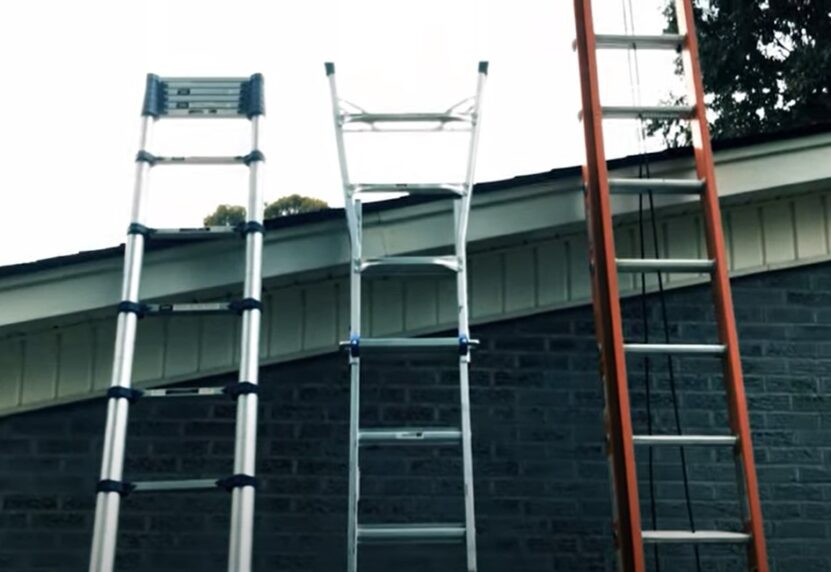When it comes to choosing the perfect ladder for your needs, the battle between Little Giant vs Werner is one that often comes to mind.
In this article, we’ll explore both brands, and help you decide which ladder will be the best fit for your next project.
How They Differ
Weight
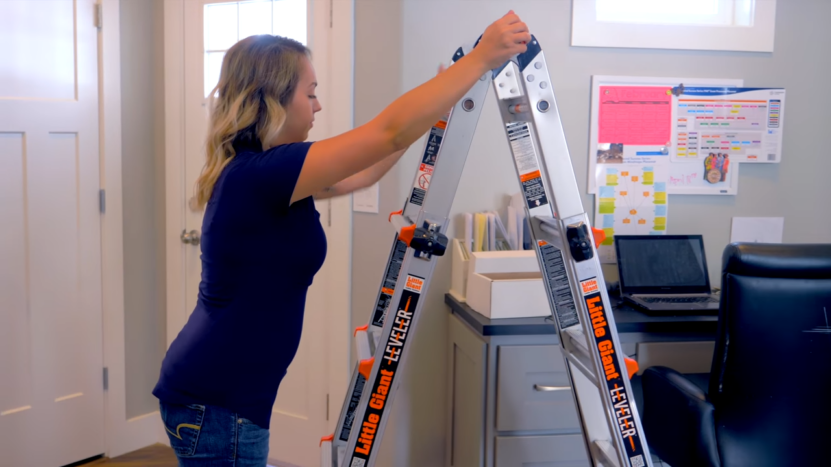
Even though the Little Giant is nearly double the size, it weighs the same as the Werner, which suggests that the Little Giant uses lighter (and stronger) materials. The Werner’s steps are much slimmer, making it less comfy than the Little Giant.
Werner’s steps have a somewhat rounded shape – rather than rectangular – which adds to the discomfort. In contrast, the Little Giant has wider steps, making it more comfy and sturdy, even for indoor use.
But, when wearing boots with sturdy soles, both ladders feel pretty much the same. Comparatively, the Little Giant feels better when you’re rocking crew socks instead of the Werner.
Sturdiness/durability And Steadiness
When it comes to joint strength, the Werner doesn’t quite measure up to the Little Giant. Using the Werner as a stepladder, you’ll notice the joints have a bit of play, and it might wobble occasionally, but you won’t topple over.
On the flip side, the Little Giant is hands-down one of the sturdiest ladders you’ll ever find. While Werner ladders have shown stability over time and there aren’t many complaints, the Little Giant truly inspires confidence.
With practically zero wobble, it often feels like you’re standing on solid ground.
Number of Pins in Each Joint
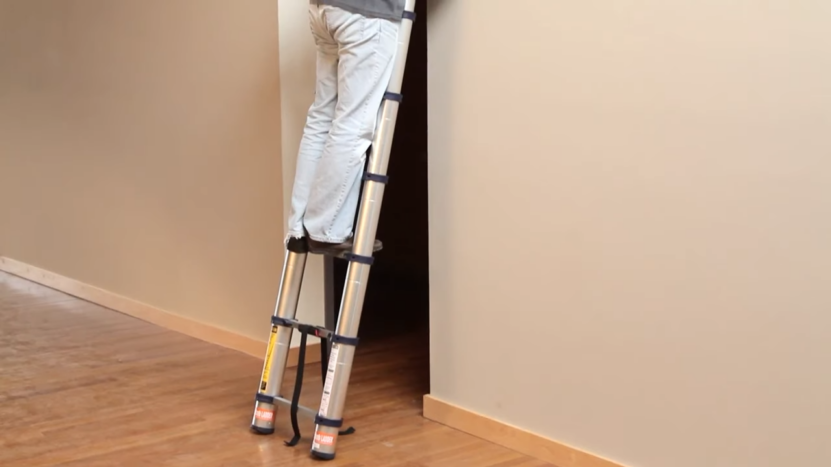
The Little Giant ladder boasts 4 pins on each joint, while the Werner only has two. It’s clear that the Little Giant is stronger because of this. However, Little Giant ladders prioritize comfort and stability but come with a higher price tag.
Werner ladders, on the other hand, are a budget-friendly option, and the manufacturer had to compromise on materials to maintain affordability. This (Amazon) is a decent Little Giant alternative, with its only downside being its bulkiness.
Ease of Use
The 4 pins on each Little Giant joint make it sturdy, but assembling and disassembling it takes twice as long. The top pins on the Werner are easy to release when folding the ladder and secure effortlessly when setting it up. The Werner is definitely simpler to use.
Extending and Contracting Sections
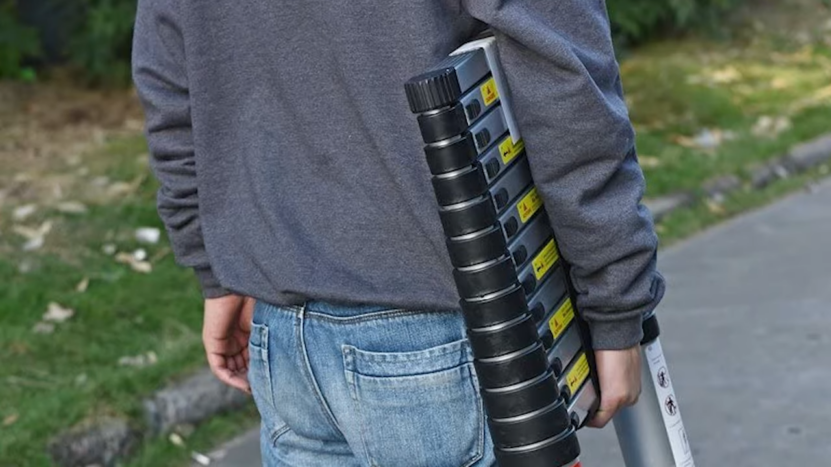
When extending and contracting sections, the Little Giant ladder rungs are held in place by locks. You have to be careful when using them to avoid pinching your arm or finger.
The Werner, on the other hand, uses a spring mechanism for releasing and inserting pins. This demands more effort (and shoulder strength). In this case, the Little Giant is definitely easier to use.
Little Giant and Werner Ladder Safety
It’s pretty much a given that as a homeowner, you’ll need to use a ladder at some point. That’s why it’s super important to know the basic safety skills when it comes to ladder usage.
Here are some crucial tips for ya:
Tip 1: Invest in a top-notch ladder. Trust me, it’s worth spending a bit more to get a newer model. Go for an aluminum or fiberglass ladder that’s rated to hold your weight! If the ladder says it can handle 250 lbs., don’t get it if you weigh 251 lbs. or more. Play it safe and get a stronger ladder.
Tip 2: Get yourself some ladder stabilizers. Seriously, they’re not just a gimmick! These babies usually cost around $25-40 at your local hardware store and can be attached to the end of the ladder to keep it steady. Most falls happen when someone’s trying to climb back onto the ladder from the roof and it slips sideways.
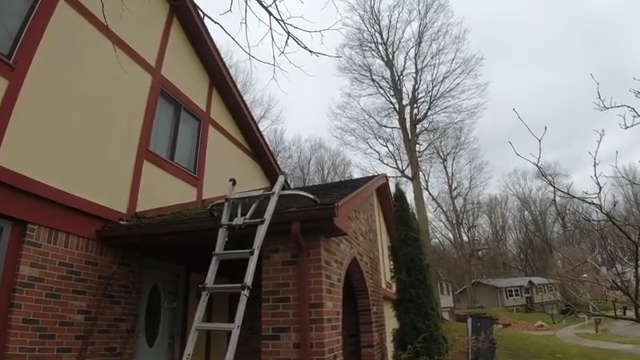
Ladder stabilizers help prevent that by widening the base. And don’t forget to grab some rubber ladder guards for the stabilizer prongs to avoid damaging your siding and denting your gutters.
Tip 3: Pick a ladder with leg equalizing tech, or buy the hardware and install it yourself on both legs. This will help keep your ladder level even if the ground beneath it is sloping.
Tip 4: Grab a ladder that’s tall enough for your needs. If you’re hanging Christmas lights and the highest peak is 25′, you’ll need a ladder that reaches higher than that. Aim for at least a 28′ ladder for safe working.
Lots of accidents happen when folks stretch too far to reach that last light clip. Remember, your hips should NEVER go outside the ladder frame. If you need to reach further, move the ladder or get a taller one. Trust me, it’s not worth the risk.
Tip 5: If you’re setting up the ladder on a slippery surface, put a bag of tube sand at the base to stop the feet from sliding out. It might be a bit of a hassle, but it’s way better than having your ladder drop out from under you at 30′ in the air.
Tip 6: When placing the ladder feet on grass, roll the feet forward so the rubber grip pads face you. This helps the feet dig into the grass for better stability. Another option is to tie a rope and stake both feet between the house and ladder to avoid kickback.
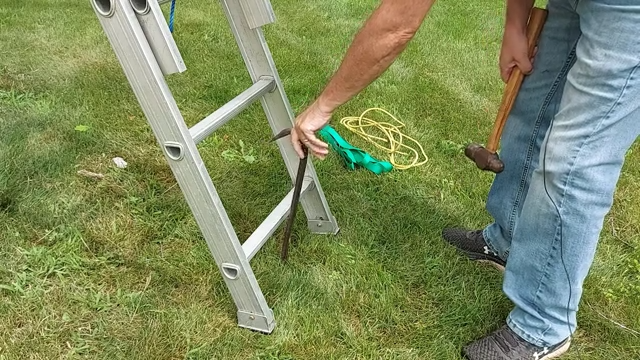
Tip 7: Secure the top of your ladder to the gutter using a rope or bungee cord. This keeps the ladder from shifting sideways where it meets the roof.
Tip 8: As you climb the ladder, always have both hands and at least one foot on it AT ALL TIMES! Focus on each step as you go up and down.
Tip 9: Don’t overload yourself when climbing a ladder. Trust me, it’s way better to make two trips up and down than to end up with a face full of gear at the bottom of the ladder.
Tip 10: If you’re working on the roof solo, set up two ladders. Imagine how silly you’d feel if you knocked over your only ladder with the hose you brought up to clean the gutters. Now you’re stranded on the roof with no way down!
Tip 11: Watch out for power lines and tree branches when carrying a ladder. Make sure you’ve got a clear path before hauling it around your house. No one wants a shocking experience, right?
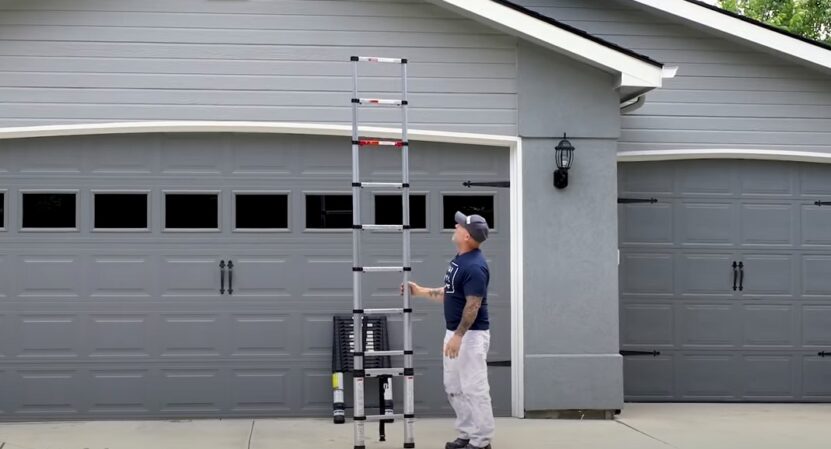
Tip 12: If your ladder starts bouncing while you climb, hold on, wait for it to stop, and then keep going. The more bounce, the more likely the ladder’s feet or you will slip.
Tip 13: Rock boots when climbing ladders, not slippery sneakers or penny loafers. Seriously, what are you thinking? Boots not only protect your feet but also keep your foot from slipping on the ladder rung, saving you from potential disaster.
My Ladder Choices
I began my DIY journey with a wooden ladder, which was an affordable choice for a newbie. After years of use, it got wobbly and unsteady.
As I moved from house to house and tackled higher roofs, I upgraded to a Werner Multipurpose ladder. Eventually, my trusty wooden ladder gave in to old age, so I replaced it with a fiberglass one. I find the fiberglass ladder great for indoor projects like painting, installing ceiling fans, and other smaller tasks.
But when I need to work in stairwells or outdoors with some height, I go for the Werner Multipurpose ladder because of its height, stability, and budget-friendly price.
FAQs
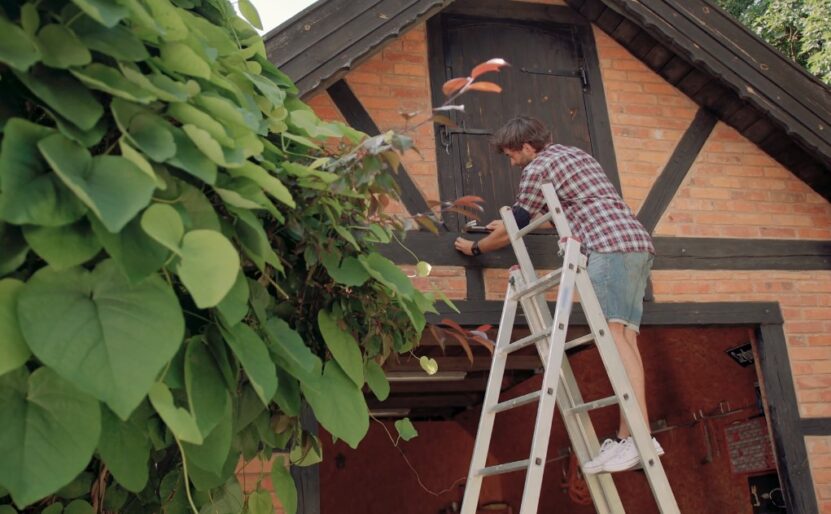
Where is Werner ladders made?
Werner ladders are made in the good ol’ USA! Their manufacturing facilities are located in Kentucky and Pennsylvania, so when you buy a Werner ladder, you’re supporting American craftsmanship.
Where is Little Giant made?
Little Giant ladders are proudly made in the USA too! Their headquarters and manufacturing facility are located in Springville, Utah. So, when you grab yourself a Little Giant ladder, you’re also backing American-made products.
What type of ladder is the strongest?
When it comes to strength and durability, fiberglass ladders take the cake! These bad boys resist weathering, electricity, and wear and tear, making them a top choice for both DIY enthusiasts and professionals. Plus, they offer a sturdy feel when you’re climbing, so you can work with confidence.
What size ladder do I need for 2 story house?
For a 2-story house, you’re gonna want a ladder that’s tall enough to reach the roof safely and comfortably. Generally, a 24-foot extension ladder should do the trick. But remember, the height of your house might vary, so always measure the highest point you need to reach before purchasing a ladder. Better safe than sorry, am I right?

